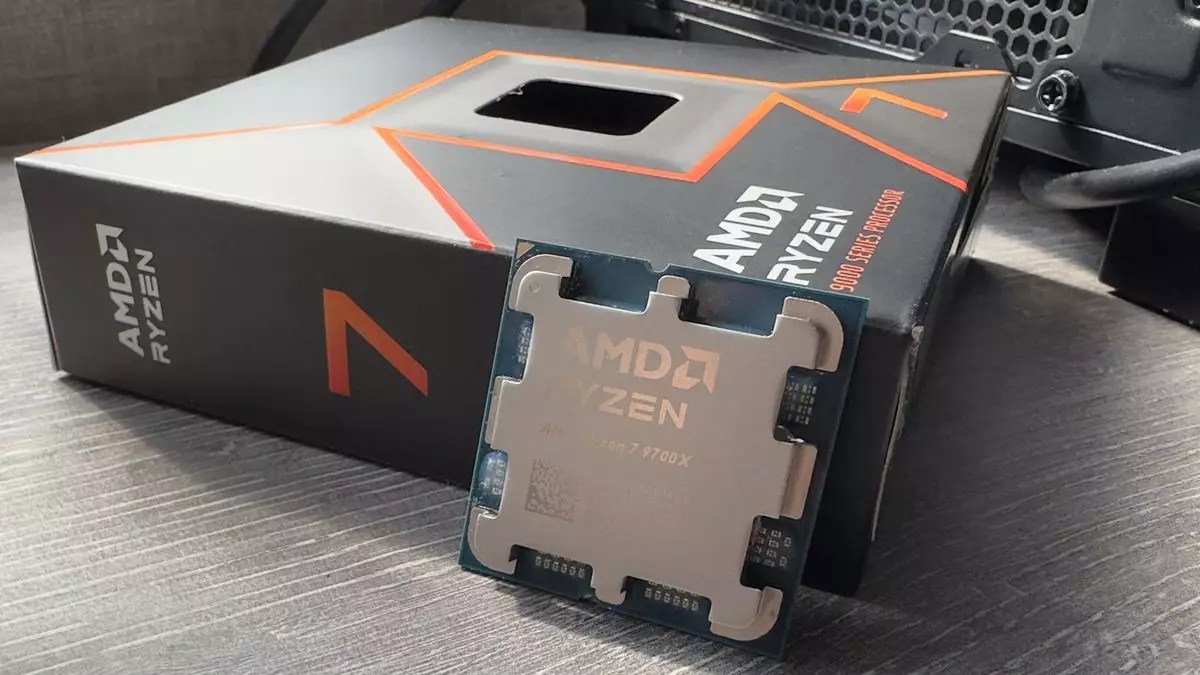The semiconductor industry has always been marked by rapid advancements, fierce competition, and strategic partnerships. As companies race to innovate and produce the most advanced chips possible, they are also navigating a complex landscape shaped by economic, political, and logistical factors. One of the most significant recent developments has been AMD’s decision to have some of its Ryzen 9000 series desktop CPUs produced at TSMC’s new fabrication facility in Arizona. This move represents not only a shift in AMD’s manufacturing strategy but also highlights the emerging trends in domestic semiconductor production.
The semiconductor shortage that has plagued the global market for the past few years has brought the importance of local manufacturing to the forefront. Countries like the United States have begun to recognize the need for self-reliance in chip production, which has traditionally been dominated by manufacturers in Asia, particularly Taiwan. By moving a portion of its CPU production to Arizona, AMD is not merely positioning itself for immediate benefits; it’s signaling a long-term strategy aimed at mitigating supply chain risks and enhancing production resilience. This decision also aligns with governmental initiatives to bolster domestic manufacturing efforts and reduce reliance on foreign sources.
However, while the idea of reshoring semiconductor production sounds appealing, the realities of manufacturing cost and efficiency cannot be ignored. TSMC’s Arizona facilities, although state-of-the-art, come at a higher production cost than their counterparts in Taiwan. This reflects both the expense related to establishing new plants and the ongoing investments required to maintain cutting-edge technology. As TSMC itself has noted, this cost differential will likely lead to increased prices for chips produced domestically, which poses a challenge for AMD in managing its cost structures without passing on significant price increases to consumers.
Beyond the headlines and implications of AMD’s shift to US-based production lies an intricate web of semiconductor design and manufacturing practices, particularly regarding chiplet architectures. The Ryzen 9000 series CPUs utilize chiplet designs, which involve multiple dies working in conjunction within a single package. While AMD has confirmed that some of these eight-core CPU dies are now being fabricated in Arizona, other critical components, such as the 6nm I/O die responsible for memory management, continue to be produced in Taiwan. This raises pertinent questions regarding the true nature of the ‘American’ CPU.
In essence, even if the CPU cores are made in the US, the final product cannot be labeled as entirely American-made due to the contributions of Taiwan-based components. Furthermore, the manufacturing complexities involved with semiconductor packaging also beg consideration. The Ryzen 9000 series encapsulates a host of elements, each potentially originating from different geographical locations—a scenario representative of global supply chains today.
As TSMC continues to expand its Arizona operations with multiple fabs, it is essential to note the technological capabilities of each facility. The first fab, FAB 21-1, is already producing chips using the 4nm process node, while future facilities aim to progress to the 3nm and eventually the 2nm nodes. However, TSMC’s recent approach indicates that productions in the US may lag behind in terms of cutting-edge technology. This creates a mixed picture for the likes of AMD, which has historically used more mature nodes for its products.
Despite the presence of advanced fabrication technologies in Taiwan—such as the N3 and N2 nodes—AMD tends to adopt slightly older nodes. This strategy raises the question of whether AMD can maintain its competitive edge when rivals like Intel and Nvidia are utilizing the latest available technologies. As the landscape shifts, AMD must navigate this balancing act of cost, technological capability, and market demand.
Only time will reveal the full ramifications of AMD’s decision to diversify its manufacturing locations. While escalating costs associated with US-based production present evident challenges, the potential benefits—including supply chain resilience and alignment with domestic economic policies—cannot be overlooked. As AMD, TSMC, and others move forward in this dynamic environment, stakeholders will undoubtedly be keeping a close watch on production strategies and product availability.
Ultimately, as the semiconductor industry evolves, the choices made today will shape the market landscape for years to come. In a world growing increasingly aware of its dependencies, AMD’s commitment to domestic production may well prove to be a critical step in building stability amid unpredictability. Moving forward, it will be fascinating to see how this trajectory unfolds and what it ultimately means for consumers and the industry at large.


Leave a Reply